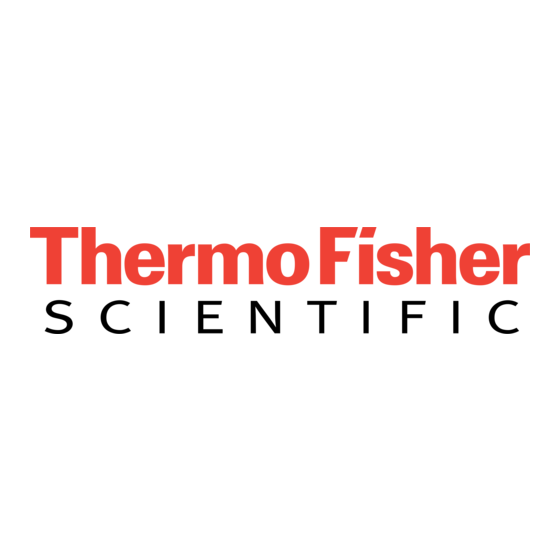
Table of Contents
Advertisement
Quick Links
Q: What are the sample size requirements for the NanoDrop Lite?
A: Although 1 ul volumes are usually sufficient for most sample measurements, increasing the sample size to 2 ul will
ensure proper column formation for samples with reduced surface tension properties.
Q: Will the sample size affect the concentration results?
A: No. All calculations are volume independent. Sample concentrations for all applications are calculated using the Beer-
Lambert equation, which relates concentration to absorbance using analyte and wavelength specific extinction
coefficients or conversion factors.
Q: What pathlengths are used to make measurements and is the user required to make any calculations relevant to the
pathlength?
A: The NanoDrop Lite uses a 0.5 mm pathlength and all reported concentration results have taken into account the
pathlength. The absorbance reported for all measurements is normalized to a 10 mm pathlength.
Q: What types of samples can be measured with the NanoDrop Lite?
A: The NanoDrop Lite is designed to measure the absorbance and calculate the concentration of nucleic acids (260 nm)
and purified proteins(280 nm). This would include dsDNA, ssDNA, RNA and purified proteins.
Q: Do nucleic acids require purification prior to measurement?
A: Yes. Absorbance measurements are not specific for a particular sample type. Any analyte that absorbs at 260 nm
(DNA, RNA or free nucleotides) will contribute to the total absorbance of the sample.
Q: What sort of reproducibility and dynamic range should I expect when measuring nucleic acids with the NanoDrop Lite?
A: The dynamic range depends on the nucleic acid being measured. Refer to the NanoDrop Lite User Guide for more
information on dynamic range and expected reproducibility.
Q: Do proteins require purification prior to measurement on the NanoDrop Lite?
A: Yes, making absorbance measurements will be affected by the presence of non-protein molecules which absorb at
280 nm. The NanoDrop Lite is not designed to measure non-purified proteins and it does not measure the A280/A260
purity ratio for proteins.
Q: What is the dynamic (concentration) range and reproducibility for proteins on the NanoDrop Lite?
A: The dynamic range depends on the assay type selected for the protein being measured. Choices are 1A/cm = 1
mg/ml, IgG or BSA. Refer to the NanoDrop Lite User Guide for more information on dynamic range and expected
reproducibility.
Q: Can I use colorimetric methods such as Bradford or Pierce 660 with the NanoDrop Lite to determine the total protein
concentration in samples such as cell lysates?
Thermo Scientific NanoDrop Products
302-479-7707
T129–TECHNICAL BULLETIN
Frequently Asked Questions
Wilmington, Delaware USA
Toll free (US & Canada) 877-724-7690
NanoDrop Lite
Technical support:nanodrop.techsupport@thermofisher.com
www.thermoscientific.com/nanodrop
Advertisement
Table of Contents

Summary of Contents for Thermo Scientific NanoDrop Lite
-
Page 1: Frequently Asked Questions
IgG or BSA. Refer to the NanoDrop Lite User Guide for more information on dynamic range and expected reproducibility. Q: Can I use colorimetric methods such as Bradford or Pierce 660 with the NanoDrop Lite to determine the total protein concentration in samples such as cell lysates? - Page 2 NanoDrop Lite Page 2 A: No. The Protein A280 application of the NanoDrop Lite is designed for measuring purified proteins that absorb at 280nm. Calculations are based upon Beer’s Law, using a protein specific extinction coefficient. Colorimetric assays require standard curve generation and absorb light at wavelengths other than 280 nm. If you are currently using a colorimetric assay to measure proteins, it is recommended that you use one of the preprogrammed colorimetric methods available on the NanoDrop 2000/2000c.
- Page 3 A. Use Sample History under the Tools and Settings menu to view or print previous measurements. Q: Does the NanoDrop Lite require a computer to operate? A: No, the NanoDrop Lite instrument is a standalone unit with local control. Data can be saved to a memory device and transferred to a computer.












Need help?
Do you have a question about the NanoDrop Lite and is the answer not in the manual?
Questions and answers